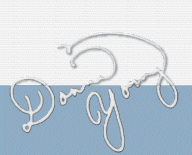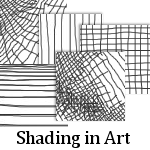Evaluation Tips for Drawing Ia
This page shows some examples of what to look for when evaluating students' work from the 1a drawing lessons. In each example, the suggested model is shown in the left-side box and the child's drawing of the model is show in the right-side box. Under each example I have written an explanation of the details that one should examine when evaluating the drawing. Please note that these particular lesson plans aim to teach a child to notice the details of the model by recognizing the size, shape, position and direction of lines, dots, circles, etc. in a defined space. These are not creative drawing classes.
From Lesson
03 Row 2
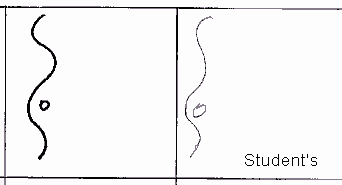
The student represented the wavy line within the space fairly well although it could have been much better. The circle is a little big.
If this were a certain person's profile then it would not have resembled that person.
From Lesson 04 Row 2
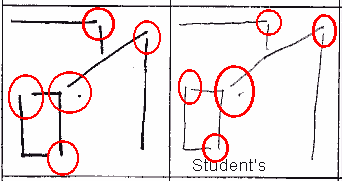
The student did a very good job of observing that many of the lines are not joined. The angles of the lines are also very close to the original.
From Lesson 11 Row 3
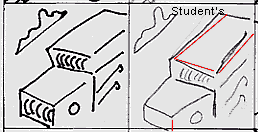
Not bad
From Lesson 11 Row 4
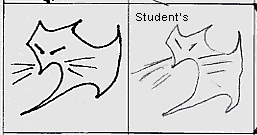
The fox-like one could have been better, but it is acceptable because it seems to convey the same creature.
From Lesson 12 Row 3
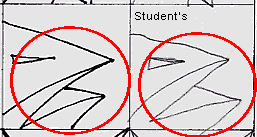
This drawing is close to the original however, there is an important difference that I want to point out. Pretend this is a fish. Because the student drew the fish mouth and eye lines at slightly different angles, the fish does not seem to be the same. The original fish looks angry and in the student's drawing, the fish has lost much of its anger-look.
From Lesson
12 Row 4
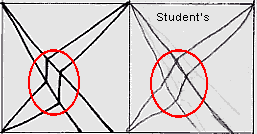
The student did not notice the angle of the the two vertical lines in the middle. Other than that, it is good.
From Lesson
12 Row 5
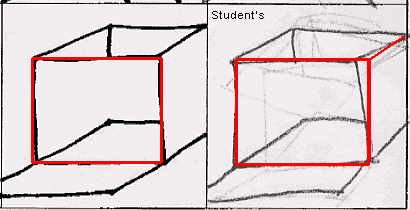
The student corrected his drawing many times before being satisfied. The final drawing is, as you see in the image, very good. Much of the original mistakes stemmed from the student not noticing all of the groups of parallel lines. The student may not have taken time to study his subject before drawing it. The first object that should have been draw was the square (outlined in red), after that, all of the lines that are parallel in relation to the square. Then the adjoining parallel angled lines. Had the student noticed that most of the lines are either horizontal or vertical in relation to the space, he would have drawn more accurately the first time.
From Lesson 20 Row 1
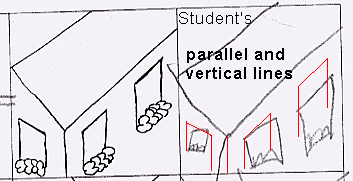
The student failed to see the parallel lines. The two side window tops are parallel to the roof edge.
The window sides are vertical and parallel to the corner of the house.
This mistake is very common.
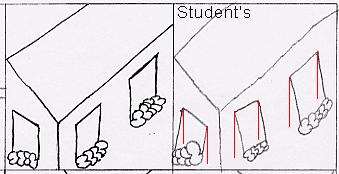
This example of handout #L20 is by a different student. This student is more advanced at artistic seeing, yet this student still did not notice the vertical lines of the windows. The student did, however, notice lines parallel to the top edge of the windows and roof line.

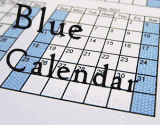
 Part of Lesson Two from Drawing with Children
Part of Lesson Two from Drawing with Children Household- Half-sized - Paper
Household- Half-sized - Paper